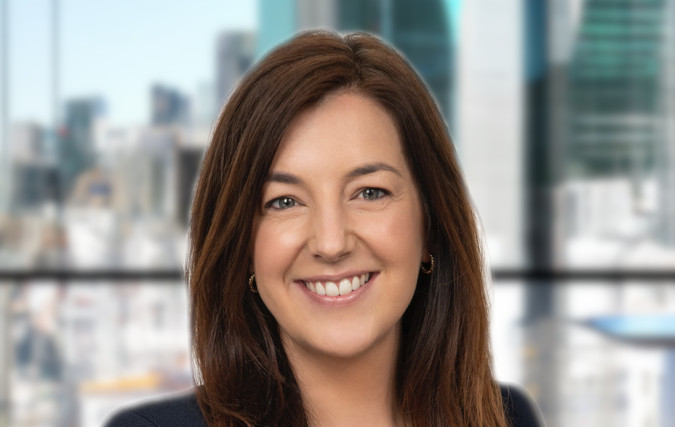MLC’s Rachael Lockyer expects to see an increase in activity in the US private equity secondaries market.
Rachael Lockyer, Head of Australia, Private Equity at MLC Asset Management, expects to see an increase in activity in the US secondaries market, with a number of continuation funds launching to allow the exit of investments.
Continuation funds have become the preferred exit option for some private equity (PE) managers, especially when some investors are keen to hang on to the assets, while allowing those who want to leave to take their capital. Other options include the sale of the assets either in a trade sale or to a strategic buyer and an initial public offering.
“In the last few months of 2024, we have had quite a few exits happening in our portfolio,” Lockyer says. She says the 2020/21 vintage investments are reaching a point where an exit is likely.
Assets are valued to market at a time when the primary fund is being rolled over into a continuation fund. Investors in the fund have the opportunity to take money off the table at that valuation or they can roll into the new fund and stay invested for a longer hold, she says.
“There have not been too many trade buyers in the market and although the initial public offering market is open, it has not been booming –that’s for sure,” she told [i3] Insights. This leaves the creation of continuation funds as the best option for PE fund managers.
“2020-2021 was a buoyant year; one of the largest fundraising periods ever. Four years later, a lot of those funds are coming back to the market, but they have to sell some companies in their portfolio to return capital to investors who require realised returns before committing to another fund.

If you look at the US, all the private equity capital that’s in the ground there – more than 50 per cent of that capital is over six years old. That’s a lot of money that needs to be returned to investors
“If you look at the US, all the private equity capital that’s in the ground there – more than 50 per cent of that capital is over six years old. That’s a lot of money that needs to be returned to investors,” Lockyer says, adding that this is the reason continuation vehicles have really taken off in the US.
While the concept of the continuation fund is not yet readily embraced in Australia or Asia, a few such vehicles have been launched in Europe. To date, it is in the US that continuation funds have been quite dominant.
In a 2024 paper on the rise of private equity continuation funds, the Harvard Law School Forum on Corporate Governance, says:
“Continuation funds are not an esoteric phenomenon. In the past few years, they have grown increasingly popular within the private equity space and are now the most common type of secondary transactions led by private equity sponsors. In 2021, these transactions reached their highest volume in history, estimated at around $65 billion in deal value, representing a 750 per cent increase since 2016.”
According to industry estimates, that number has continued to creep up when in an environment of higher interest rate and general uncertainty about the course of the US economy, traditional exit strategies have become a challenge.
The financial data company, Pitchbook, recorded 71 exits into continuations funds, totaling US$6.1 billion, in 2023. It expects an almost 30 per cent increase in continuation funds to more than 100 transactions in 2024.
In the industry, continuation vehicles are supported by a strong secondary market awash with dry powder, says Lockyer, adding: “At the moment there’s just a lot of capital in the secondary market looking for a home.”
Evercore Private Capital Advisory, a US independent investment firm based in New York, said in its 2024 secondary market review, published in July 2024, that the volume of secondaries hit a record high of US$160 billion in 2024 – up from US$114 billion in 2023.
The firm expects active deployment to continue because of the high volume of dry powder sitting on the sideline. It estimates a total of US$189 billion at the end of June 2024 – up 14 per cent relative to six months earlier.
The secondary market is where stakes in companies owned by private equity funds are sold to other investors as a way of creating liquidity in otherwise illiquid private equity investments.
The Launch of MLC Private Equity Partners
In what was described as an Australian first, MLC Private Equity launched MLC Private Equity Partners last March, raising US$762 million.
The transaction was led by a leading US player in the PE secondary market, StepStone Group. It also attracted a select group of institutional investors.
The vehicle holds about US$632 million of mid-market PE fund positions and co-investments across North America, Europe, and the UK. The vehicle also raised US$130 million of fresh capital from institutional investors. MLC Private Equity is deploying the capital into new PE funds and co-investment opportunities in the mid-market.
This year, the MLC PE team expects to deploy “hundreds of millions” in the private equity space. MLC Private Equity is one of the most experienced global private equity managers in Australia with over 27 years’ experience investing in private equity. Since inception, MLC Private Equity has committed approximately A$10 billion to private equity funds and co-investments across more than 100 fund relationships globally.

We have 27 years of data, and, over time, we have not seen a material change in our valuations when businesses are sold
On the question of valuation of private market investments – a source of concern for the regulator, APRA – Lockyer says: “We have 27 years of data, and, over time, we have not seen a material change in our valuations when businesses are sold.
“We feel our mark-to-market (approach) is very reflective of the actual value of these businesses. And while there’s been a lot of criticism in the media about valuations for private equity, we obviously look at our valuations very carefully. We have a long-standing relationship with all our managers, and we understand the intrinsic value of a business.
“You know, when the managers are really aligned to improve the businesses and you’re with them in the journey and entrenched with them to help them get through the challenging times, you don’t often end up having many losses. So, our loss ratio is substantially lower than the market (and this) obviously helps me to sleep at night.”
__________
[i3] Insights is the official educational bulletin of the Investment Innovation Institute [i3]. It covers major trends and innovations in institutional investing, providing independent and thought-provoking content about pension funds, insurance companies and sovereign wealth funds across the globe.


